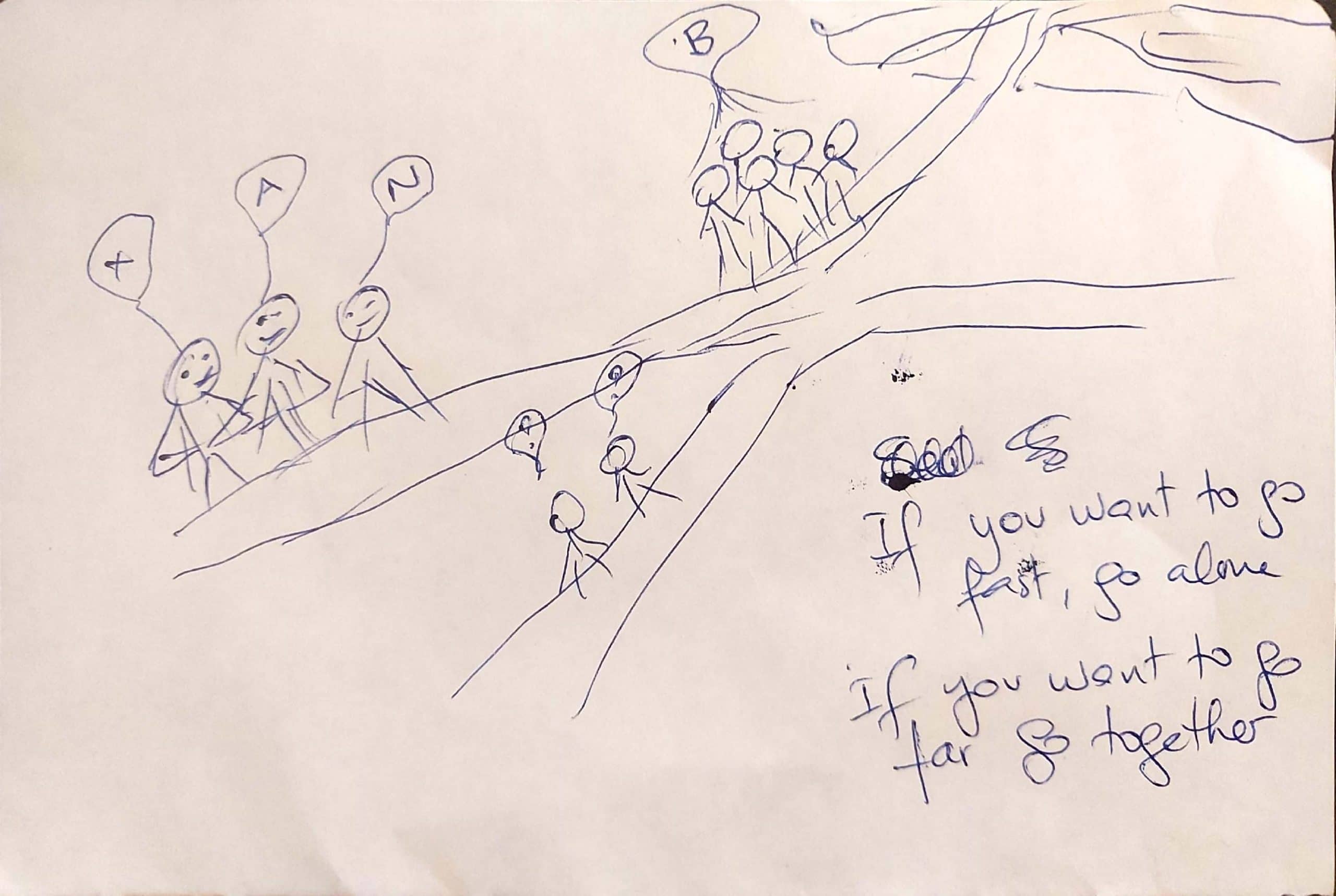Strategic Partnerships: MAVA’s approach to scaling up conservation impact
This year we were privileged to work with innovative philanthropists, The MAVA Foundation on their publication “Strategic Partnerships: MAVA’s approach to scaling up conservation impact.”
This Virtual Book Sprint was small – just 7 people – 5 from MAVA and 2 from FOS Europe, the partner who collaborated with MAVA to develop their Strategic Partnership Approach over the last 5 years. The Sprint was a process stepping back after a lot of hard work and reflecting on their processes, successes, and documenting exactly what is the approach they have built and how might it inspire others in the conservation community.

One of the participant’s drawings in answer to the question “What is the most important message this book should communicate?” on Day 1.
While it is a short book, it was a long process to write “Strategic Partnerships: MAVA’s approach to scaling up conservation impact”, involving much discussion, writing and rewriting as the group honed in on what the magic ingredients of the Strategic Partnership Approach actually are. This is often quite an arduous task for writers we have found. It is often easier to write on a topic which one is more distant from.
A Strategic Partnership, in the authors words, can be explained “as a collaboration between actors with different but complementary capabilities, working towards achieving shared conservation outcomes on a scale that matters.”
In 2016 MAVA looking ahead to their planned closure in 2022, decided to make a very bold move in an effort to increase collaboration amongst conservation actors, thereby laying the foundations for a strong community and scaling up overall impact of conservation efforts. The foundation shifted funding for 250 individual projects to funding for 25 Strategic Partnerships, supporting grantees to develop shared objectives and work together towards collective impact. This also helped change the traditional funder-grantee dynamic, empowering the grantees and their relationships rather than creating competition amongst them.
And while this change of course was painful in ways, it certainly paid off, which can be attested to in all the feedback from the partners in the publication.
We had to broaden our network and were “forced” to work with other institutes and agencies who were not familiar with us. It has become a fantastic opportunity to work closely with highly skilled individuals and in themes where we were not experts, pushing our limits and giving us a team’s perspective, and grounds for future work together, that would have not been possible otherwise. (Iván Ramirez, BirdLife International)
The publication includes the critical ingredients of this approach as well as application examples to illustrate the main concepts and testimonials from MAVA partners, staff, and Board members.
